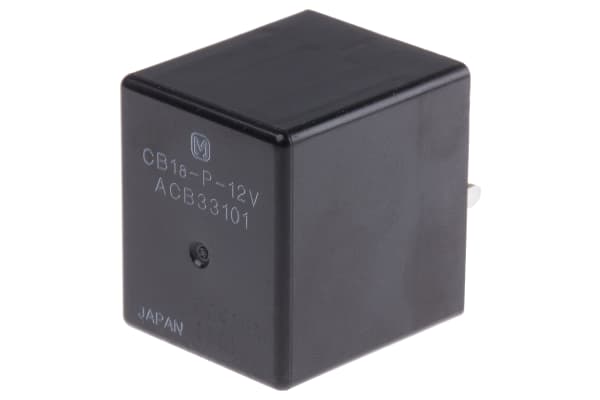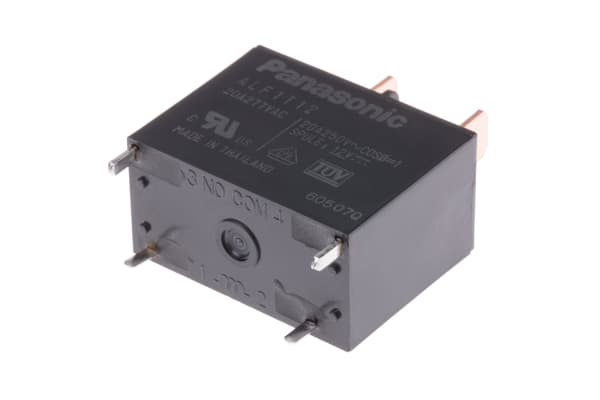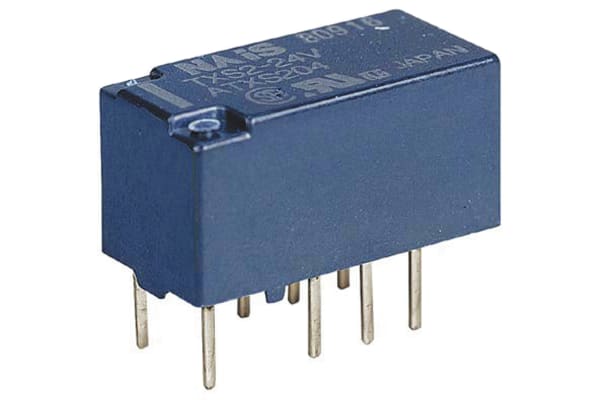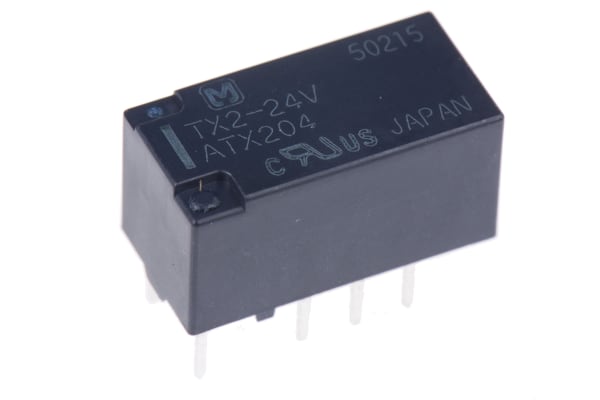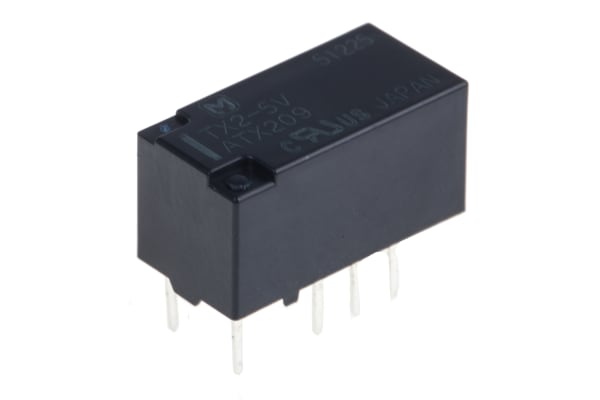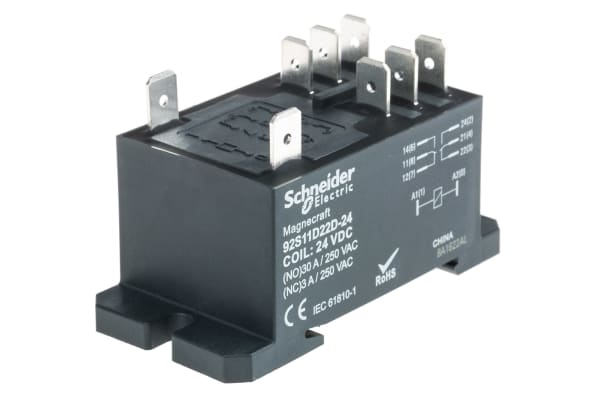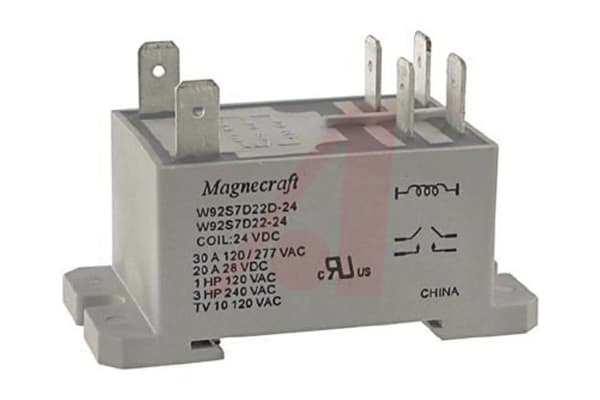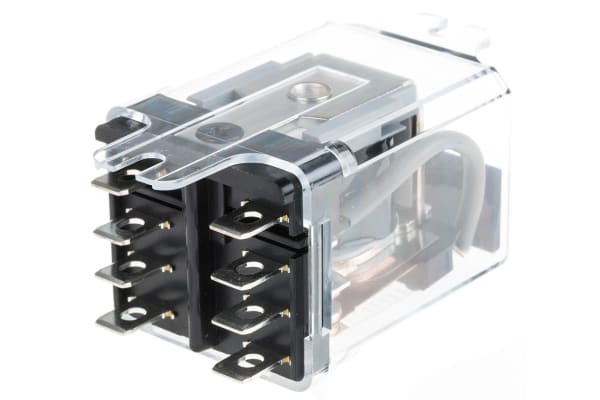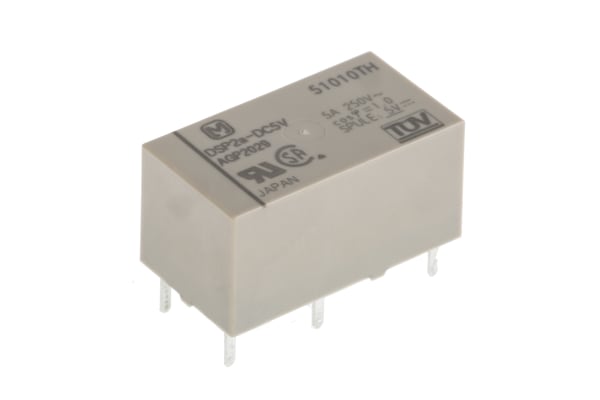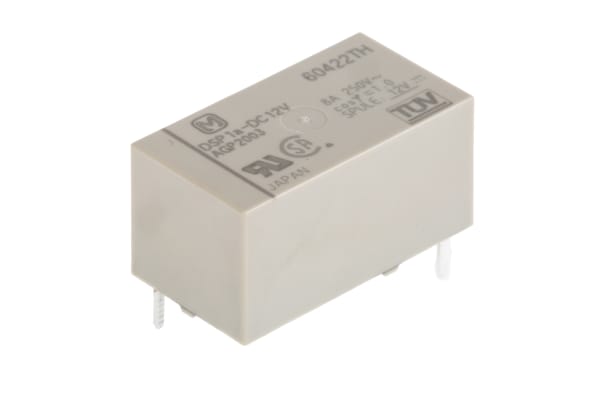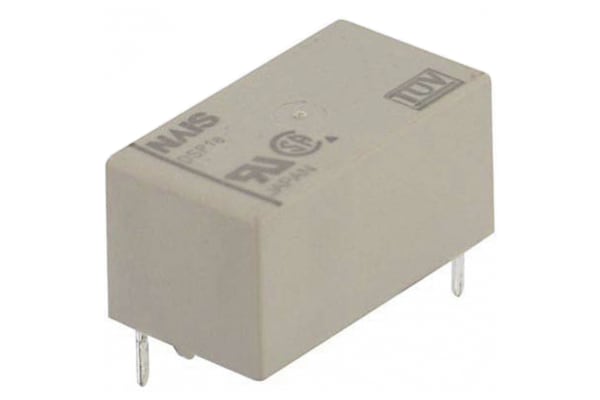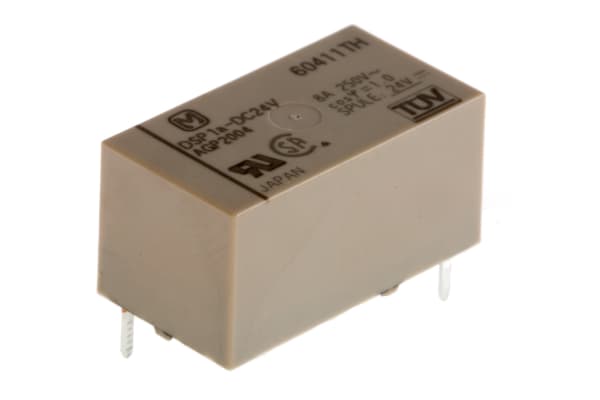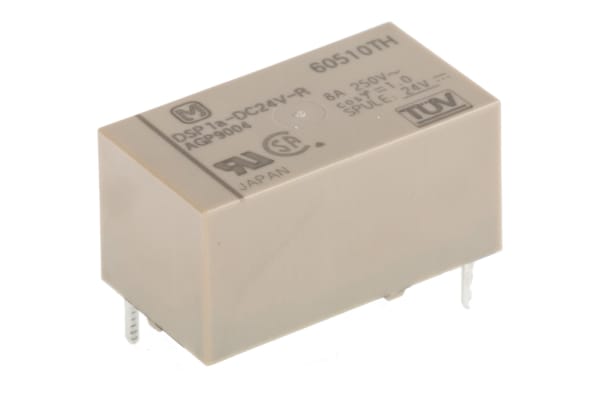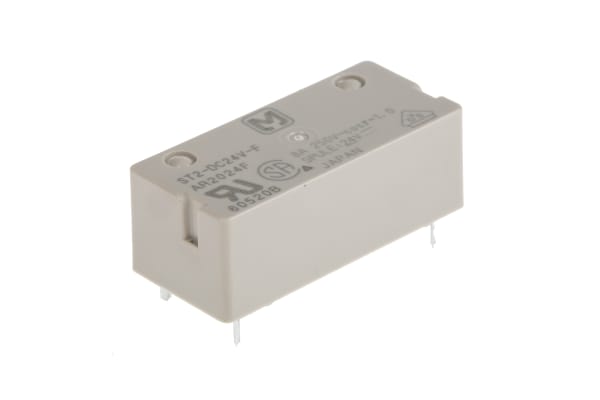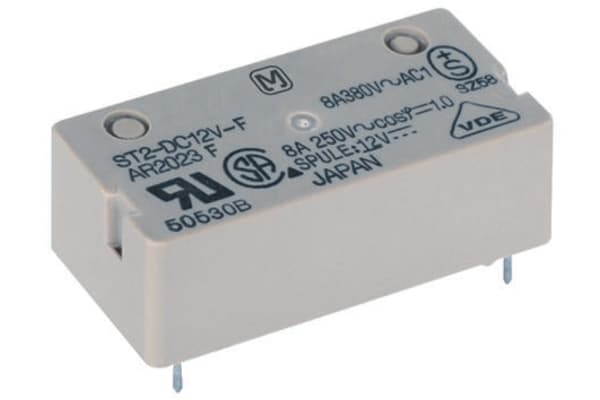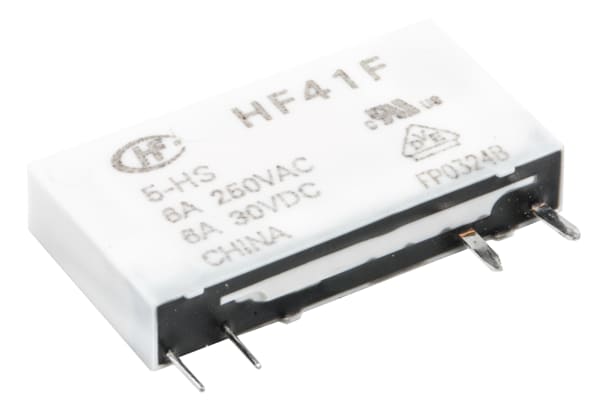Non-Latching Relays
Relays are electrical switches that are operated by electrical impulses with the primary function to open and close a circuit, they can also be referred to as industrial switches. There are 2 main types available, latching and non–latching relays.How do non-latching relays work?Non-latching relays are in a normally closed (NC) position and will stay in this state without power. When power passes through the circuit, the relay switched to a normally open (NO) position by using an internal coil to generate a magnetic force, holding this NO position. Once the current is turned off, it returns to the NC position. This makes non-latching relays well suited to push-button applications like keyboards and micro-controller input buttons.What are non-latching relays used for?Non-latching relays are highly durable and versatile components, making their performance long lasting and suitable for use in a wide range of applications, such as:Automotive enginesHousehold appliancesIndustrial machineryMedical equipmentTelecommunications equipmentWhat is the difference between latching and non-latching relays?Both types of relays in similar in design and function, however, a significant difference between them is that a latching relay will remain in the last position it when it was last powered, whereas a non-latching goes back to its normal position. This makes each more type of relay suitable for different applications. Considerations when selecting a relayWhen choosing a relay, it is important to consider a number of specifications to ensure it is fit for purpose, some factors include:Coil voltage – the required voltage to actuate the switching mechanism. If a voltage is too high this could damage the components, if it is too low then it will not actuate. Contact configuration – This is the state the contacts are in without power. For example SPST, single pole single throw.Contact material – the relay contacts are available in many materials that have certain properties. Common materials are gold, silver, tin oxide and nickel Coil power – the amount of power (watts) the coil operates at. This must match the power in the circuit for correct function. Coil resistance – the amount of resistance (ohms) in the circuit that the coil creates.
-
Panasonic, 12V dc Coil Automotive Relay SPNO, 40A Switching Current PCB Mount Single Pole, CB1A-P-12V
IDR65,346.47 -
Panasonic, 12V dc Coil Non-Latching Relay SPNO, 100mA Switching Current PCB Mount Single Pole, ALF1T12
IDR57,165.05 -
Panasonic, 24V dc Coil Non-Latching Relay DPDT, 1A Switching Current PCB Mount, 2 Pole, TXS2-24V
IDR73,527.89 -
Panasonic, 12V dc Coil Non-Latching Relay DPDT, 1A Switching Current PCB Mount, 2 Pole, TXS2-12V
IDR46,046.71 -
Panasonic, 24V dc Coil Non-Latching Relay DPDT, 2A Switching Current PCB Mount, 2 Pole, TX2-24V
IDR48,983.63 -
Panasonic, 5V dc Coil Non-Latching Relay DPDT, 2A Switching Current PCB Mount, 2 Pole, TX2-5V
IDR30,208.32 -
Panasonic, 12V dc Coil Non-Latching Relay DPDT, 2A Switching Current PCB Mount, 2 Pole, TX2-12V
IDR32,935.46 -
Panasonic, 24V dc Coil Non-Latching Relay 4PDT, 6A Switching Current PCB Mount, 4 Pole, SF4D-DC24V
IDR613,921.17 -
Schneider Electric, 24V dc Coil Non-Latching Relay DPDT, 20A Switching Current Panel Mount, 2 Pole, 92S11D22D-24
IDR365,017.20 -
Schneider Electric, 24V dc Coil Non-Latching Relay DPNO, 20A Switching Current Panel Mount, 2 Pole, 92S7D22D-24
IDR336,172.45 -
Schneider Electric, 24V dc Coil Non-Latching Relay 4PDT, 3A Switching Current Plug In, 4 Pole, 782XDXH10-24D
IDR2,029,936.17 -
Schneider Electric, 24V dc Coil Non-Latching Relay DPDT, 30A Switching Current Flange Mount, 2 Pole, 300XBXC1-24D
IDR452,075.90 -
Schneider Electric, 24V dc Coil Non-Latching Octal Relay 3PDT, 12A Switching Current Plug In, 3 Pole, 750XCXH-24D
IDR1,989,238.85 -
Panasonic, 24V dc Coil Automotive Relay SPDT, 20A Switching Current PCB Mount Single Pole, CB1-M-24V
IDR89,576.06 -
Panasonic, 5V dc Coil Non-Latching Relay DPNO, 5A Switching Current PCB Mount, 2 Pole, DSP2A-DC5V
IDR128,700.03 -
Panasonic, 12V dc Coil Non-Latching Relay SPNO, 5A Switching Current PCB Mount Single Pole, DSP1A-DC12V
IDR140,657.49 -
Panasonic, 5V dc Coil Non-Latching Relay SPNO, 5A Switching Current PCB Mount Single Pole, DSP1A-DC5V
IDR96,079.24 -
Panasonic, 24V dc Coil Non-Latching Relay SPNO, 5A Switching Current PCB Mount Single Pole, DSP1A-DC24V
IDR75,311.02 -
Panasonic, 24V dc Coil Non-Latching Relay SPNO, 5A Switching Current PCB Mount Single Pole, DSP1A-DC24V-R
IDR71,744.76 -
Panasonic, 24V dc Coil Non-Latching Relay DPNO, 8A Switching Current PCB Mount, 2 Pole, ST2-DC24V-F
IDR146,321.55 -
Panasonic, 5V dc Coil Non-Latching Relay SPNO, 8A Switching Current PCB Mount Single Pole, ST1-DC5V-F
IDR140,028.15 -
RS PRO, 24V dc Coil Non-Latching Relay SPST, 6A Switching Current PCB Mount Single Pole
IDR75,835.47 -
RS PRO, 5V dc Coil Non-Latching Relay SPST, 6A Switching Current PCB Mount Single Pole
IDR61,675.32 -
RS PRO, 5V dc Coil Non-Latching Relay DPDT, 2A Switching Current PCB Mount, 2 Pole
IDR63,982.90



